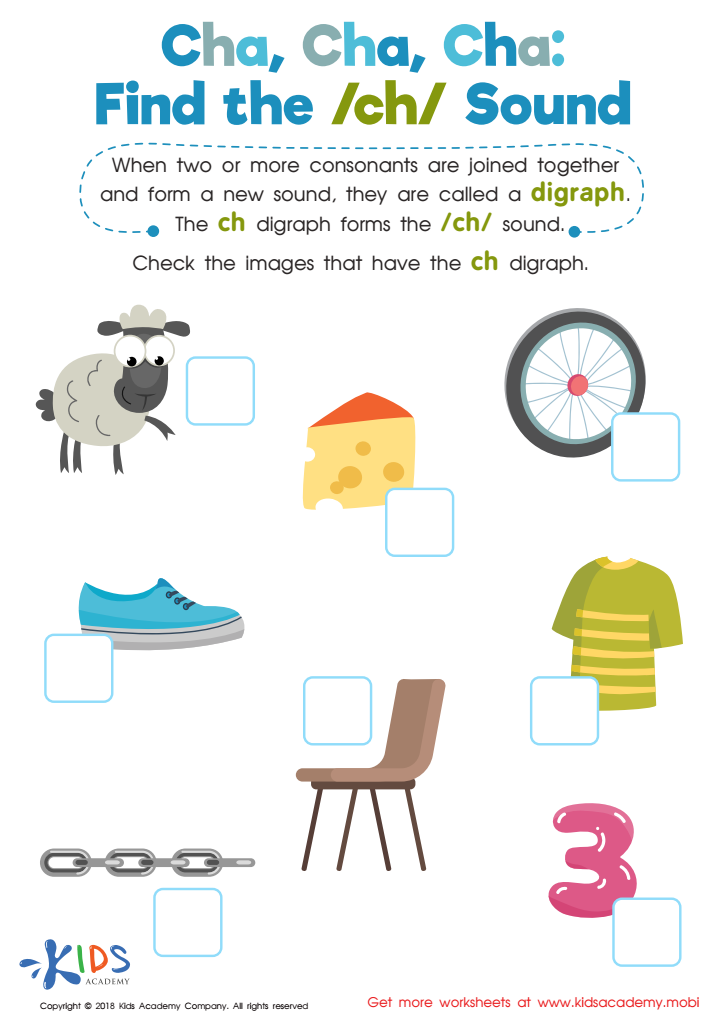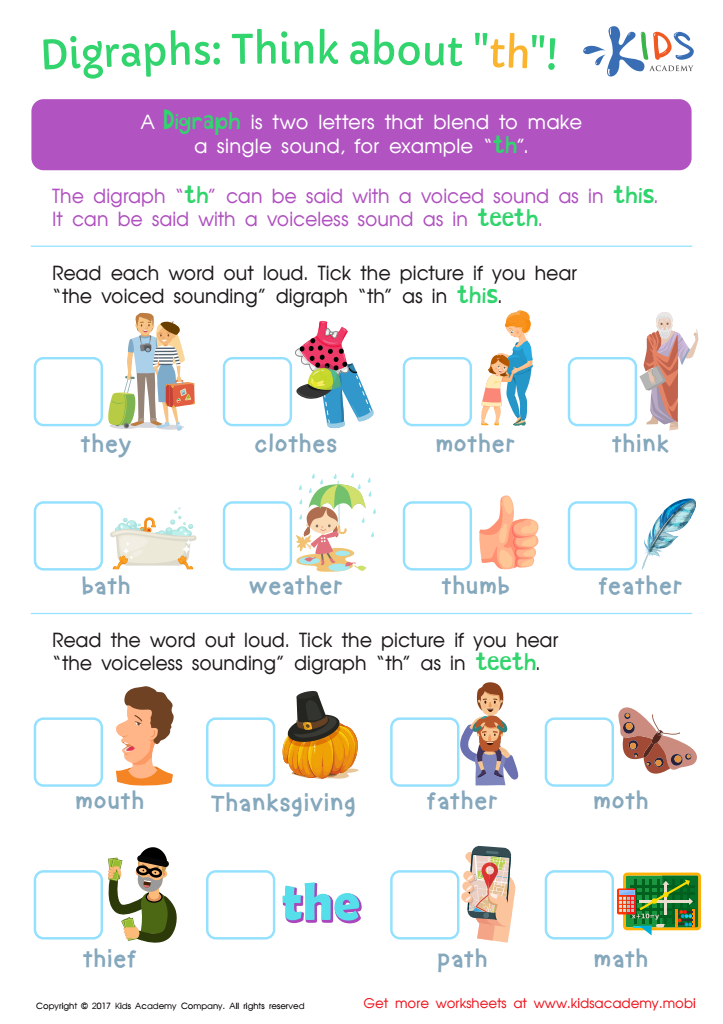Normal Consonants Worksheets for Ages 7-8
15 filtered results
-
From - To
Enhance your child’s phonics skills with our "Normal Consonants Worksheets for Ages 7-8". These engaging and educational printable worksheets offer activities tailored for young learners, focusing on recognizing, writing, and using consonants in different contexts. Perfect for second graders, these resources will help your child master fundamental literacy skills through fun exercises such as matching, tracing, and fill-in-the-blanks. Foster reading confidence and accuracy while making learning enjoyable. Support your child’s journey toward fluency in English with our expertly crafted worksheets, designed to make consonant learning straightforward and effective. Explore our collection today!


Find The Missing Word Worksheet


Where Is the Digraph? Worksheet


The /wh/ Sound Worksheet


Cha, Cha, Cha: Find the /Ch/ Sound Worksheet


Shhh... What Digraph? Worksheet


The SH Digraph Worksheet


Missing Digraph: Part 2 Worksheet


The /th/ Sound Worksheet


Review the Blends Worksheet


Let's Look for Blends Worksheet


Double Consonant Spelling Worksheet


Digraphs: Think About "th" Worksheet


Consonant Blends: "Dr" and "Tr" Printable


L Blends: "Pl", "Cl" and "Sl" Printable


Blending Consonants: "Fl", "Bl" and "Gl" Printable
Parents and teachers should care about normal consonants for children aged 7-8 because mastering these fundamental sounds is crucial for literacy and overall language development. At this age, children transition from learning to read to reading to learn. Consonants form the backbone of spoken and written language, and understanding them helps children decode new words, enhancing their reading fluency and comprehension.
Proper grasp of consonant sounds aids in spelling, enabling kids to write more accurately and expressively. Ensure consonant competency can boost a child's confidence and academic performance. Moreover, strong phonological awareness—the ability to recognize and manipulate sounds in words—supports better pronunciation and clearer speech, making communication more effective.
When children struggle with consonants, it can lead to frustration and potential delays in reading and writing progress. Early intervention and consistent practice at home and in the classroom can address these issues, mitigating more significant challenges later on.
Moreover, focusing on consonant sounds helps foster a positive learning environment where children are encouraged to explore language, ask questions, and develop a love for reading. Thus, investing time and attention in mastering consonants is a foundation for future academic success.
 Assign to My Students
Assign to My Students











